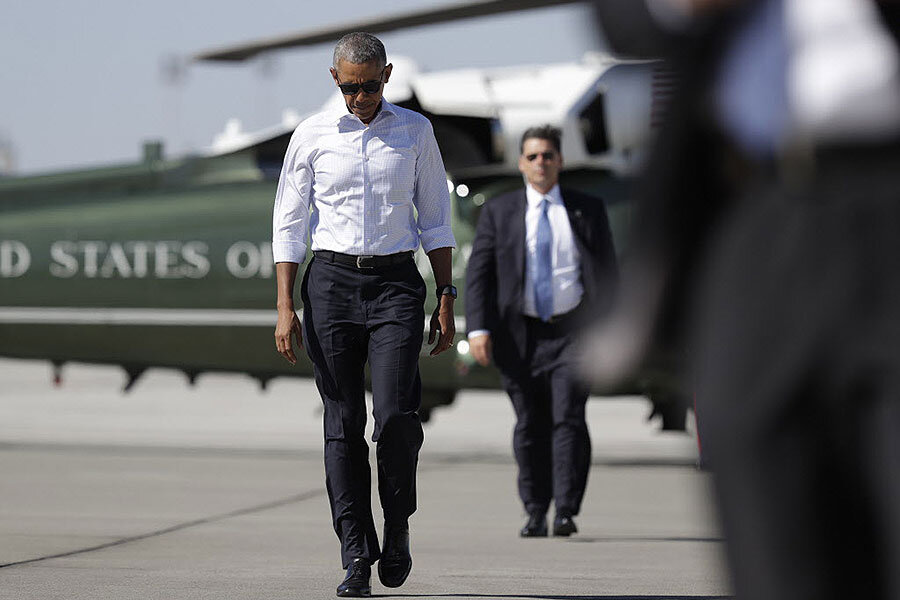Obama visits Hawaii as part of his conservation legacy tour
Loading...
From Midway to Katahdin, it has been the summer of the national parks for President Obama as he works to solidify his legacy as a conservationist.
Mr. Obama will travel to the far-flung waters of the Midway Atoll on Thursday, after designating the area as part of the world's largest marine conservation area last week.
"Ancient islanders believed it contained the boundary between this life and the next," Obama said in a talk with leaders of Pacific island nations before the trip, according to the Associated Press. "This is a hallowed site, and it deserves to be treated that way. And from now on, it will be preserved for future generations."
Last July, Obama cemented his status as the US president to set aside the most protected public lands and waters, with a record 260 million acres. Since then, however, the president has designated many more, including a nearly 90,000-acre national monument in Maine's Katahdin woods, which was unveiled last week, three new national monuments in the desert of Southern California: so huge that they almost doubled the total amount of land he had conserved at the time, in mid-February 2016.
With the addition of the Papahānaumokuākea Marine National Monument, Obama’s total land conservation count is up to 548 million acres of land and sea. For comparison, President Teddy Roosevelt, also known as a conservationist president, conserved about 230 million acres.
Obama’s work to create national monuments has long been coupled with his concern about climate change. His several trips to national parks and monuments this summer, with and without his family, support this environmental legacy as the National Park Service celebrates its 100th anniversary.
The Obamas kicked off the summer with a grand trip to Yosemite National Park and Carlsbad Caverns on Father’s Day weekend. Last week, the president established the Katahdin Woods and Waters National Monument in Maine. During another visit last Sunday, the Obamas hiked through the forest of Prince William Forest Park in Virginia. On Wednesday, Obama visited a summit about the health of Lake Tahoe, which has been affected by high temperatures this year.
"The challenges of conservation and combating climate change are connected, they're linked," said Obama at the summit.
During his trip to Papahānaumokuākea Marine National Monument, Obama will spend time on the Midway Atoll, the site of World War II's Battle of Midway and a part of the new national monument, learning about some of Papahānaumokuākea's 7,000 species and meeting with conservationists.
Critics of Obama’s environmentalist policies have complained that the president often puts the environment and conservation ahead of local economies, where many residents rely on conservation land for their livelihoods. Others object to his use of executive power to set aside such broad swathes of land.
The Pacific visit is part of a ten-day trip to address climate change and attend the G20 summit in China alongside President Xi Jinping, with whom Obama worked during the Paris climate conference to try and cut carbon emissions around the world.
"No nation, not even one as powerful as the United States, is immune from a changing climate," Obama said after landing in Hawaii this week.
This report includes material from Reuters and the Associated Press.
[Editor's note: An error in this report that suggested Obama was in Maine for the dedication of the Katahdin Woods and Waters National Monument has been corrected.]






